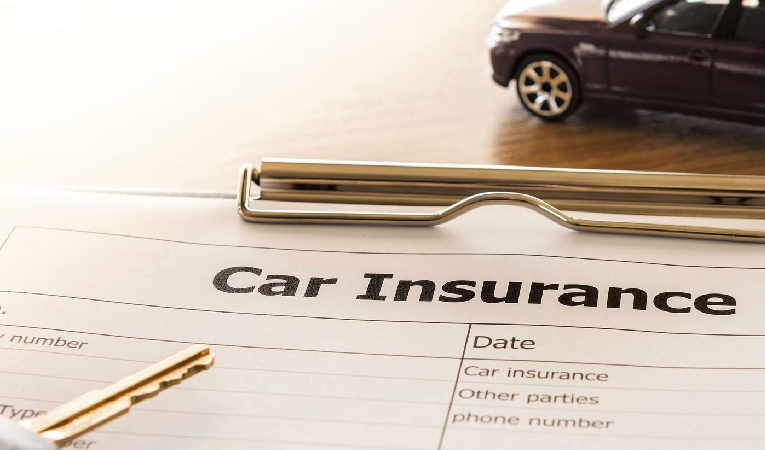Smart Driving Decisions: Understanding The Complex World Of Car Insurance

For many people, driving represents freedom, independence, and convenience. Yet behind the wheel lies a responsibility that extends beyond safe driving habits. Protecting yourself, your passengers, and others on the road requires preparation, and one of the most critical aspects of that preparation is having the right car insurance.
Car insurance is often viewed as a routine expense, something drivers pay for because the law requires it. However, the reality is that it serves as a financial safety net that can protect drivers from serious financial loss after accidents, theft, or unexpected damage. Understanding how policies work, what coverage you need, and how to evaluate options is essential for making informed decisions that protect both your finances and peace of mind.
Why Car Insurance Matters Beyond the Basics
At its core, car insurance covers liability if you cause an accident, meaning it can help pay for damages to another person’s vehicle or medical bills. Beyond liability, it may also cover your own car repairs, medical costs, or even protection if an uninsured driver collides with you. These different layers of protection show why coverage is not a one-size-fits-all product.
The stakes are high. Without insurance, a single accident could cost thousands, or even hundreds of thousands, of dollars. For example, medical bills after a crash can escalate quickly, and vehicle repair costs are higher than ever due to complex technology in modern cars. Insurance transforms what could be a financial catastrophe into a manageable event.
Factors That Shape Premiums
Car insurance pricing is not random. Insurers calculate premiums by weighing many factors, from your driving history to the type of car you drive. Age, gender, and even credit history can influence what you pay, since insurers assess risk based on statistical trends. A driver with multiple speeding tickets is seen as higher risk compared to someone with a clean record, and they will almost always pay more.
Vehicle type also plays a significant role. Luxury cars and high-performance vehicles often come with higher premiums because they cost more to repair or replace. On the other hand, vehicles with advanced safety features may reduce costs because they lower the likelihood of severe injury or damage in an accident.
Location matters as well. For example, car insurance in Atlanta may differ significantly from coverage in a rural town due to higher traffic density, accident rates, and theft statistics in urban areas. Insurers tailor their rates to reflect these realities, which is why two drivers with similar profiles might pay very different premiums depending on where they live.
Coverage Types Explained
Car insurance is not a single blanket product but rather a collection of coverages bundled into a policy. Common types include:
- Liability coverage: Covers damages or injuries you cause to others. This is the foundation of nearly every policy.
- Collision coverage: Pays for repairs to your car after an accident, regardless of fault.
- Comprehensive coverage: Protects against non-collision damage such as theft, vandalism, or natural disasters.
- Uninsured or underinsured motorist coverage: Provides protection if you are hit by someone without adequate insurance.
- Medical payments or personal injury protection (PIP): Helps cover medical bills for you and your passengers.
Choosing the right balance depends on your financial situation, driving habits, and tolerance for risk. Some drivers prioritize comprehensive protection, while others aim to reduce costs with minimum coverage.
The Role of Deductibles
Every policy involves a deductible, which is the amount you pay out-of-pocket before your insurance kicks in. Higher deductibles usually mean lower premiums, but they also mean you must pay more upfront after an accident. Drivers often struggle to strike the right balance here, but the general rule is to choose a deductible amount you could comfortably pay without creating financial hardship.
How to Shop Smarter
Shopping for insurance can feel overwhelming, with dozens of companies offering a range of policies. Comparing quotes is crucial, but cost should not be the only factor. Consider the company’s reputation, customer service, and claims handling process. Reading reviews and asking friends or family for recommendations can provide valuable insight into how insurers treat their customers when it matters most.
Technology has also made the process easier. Online comparison tools and apps can help you evaluate multiple quotes in minutes. Some insurers even offer telematics programs, where they monitor your driving habits through a device or app and reward safe drivers with lower premiums.
Avoiding Common Mistakes
A frequent mistake is underinsuring saving money. While paying lower premiums may seem appealing, it can backfire in the event of a serious accident where coverage falls short. Another mistake is not updating your policy after major life events, such as moving, changing vehicles, or adding a teenage driver to your household. These changes can significantly impact coverage needs.
Looking Ahead at Insurance Trends
Car insurance continues to evolve. The rise of electric and autonomous vehicles is reshaping coverage needs and risk assessments. Insurers are adapting to account for the high cost of electric car repairs and the unique risks associated with advanced driver-assistance technologies. Climate change is also pushing insurers to factor in the increasing frequency of extreme weather events, which can lead to more claims related to flooding or storm damage.
Why Local Context Matters
Insurance is always local at heart. For example, drivers seeking car insurance in Atlanta face specific challenges like heavy traffic, higher accident rates, and increased risks of theft compared to smaller towns. These realities directly influence both pricing and the types of coverage that make sense for residents. Understanding the local environment can help drivers choose policies that reflect their actual risks, not just general assumptions.
Final Thoughts
Car insurance may not be the most exciting part of owning a car, but it is one of the most important. It protects you from financial devastation, ensures compliance with legal requirements, and gives you peace of mind every time you get behind the wheel. By learning how coverage works, understanding what influences your premiums, and making thoughtful choices about your policy, you can transform car insurance from a confusing obligation into a smart financial tool.





